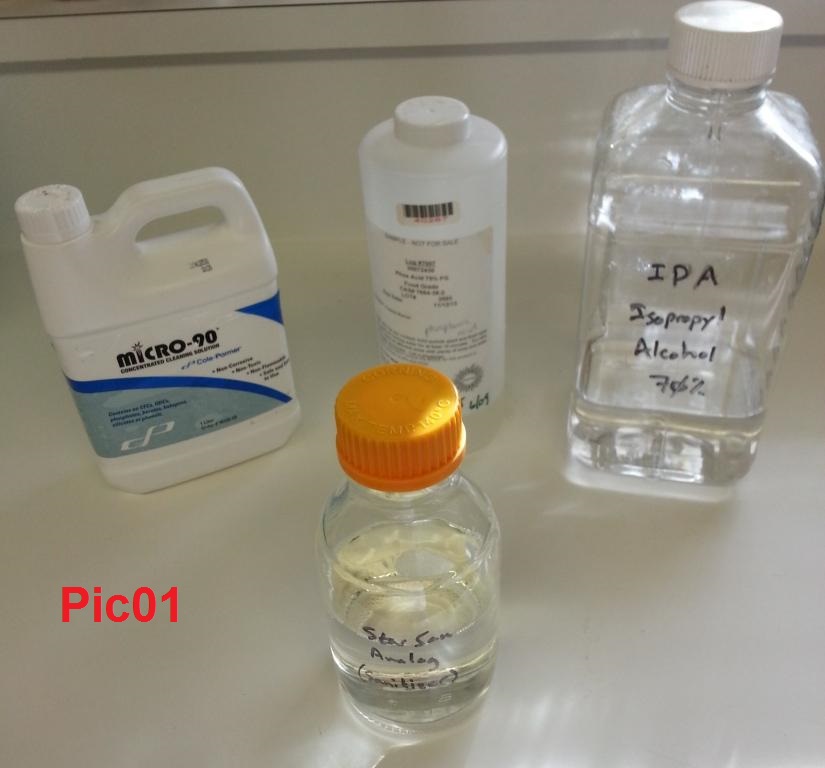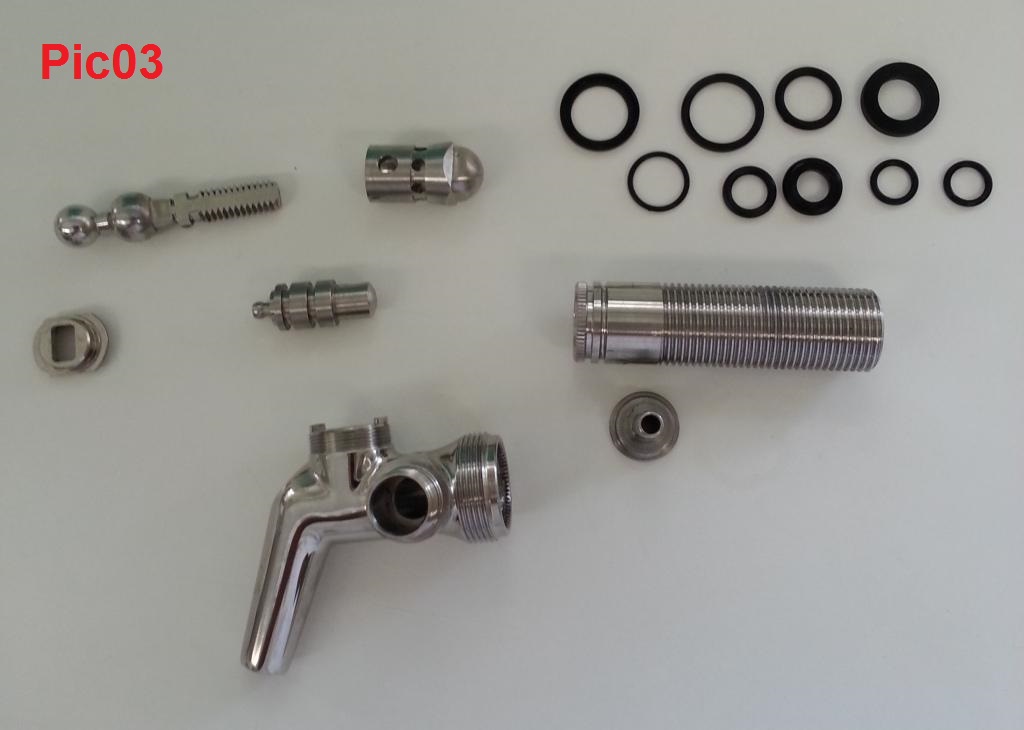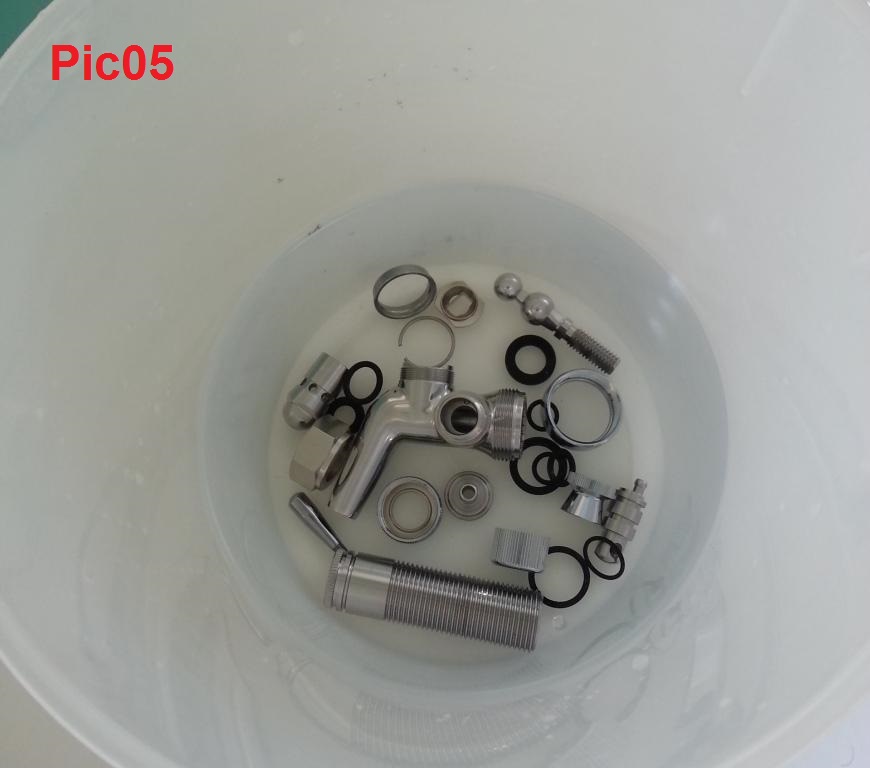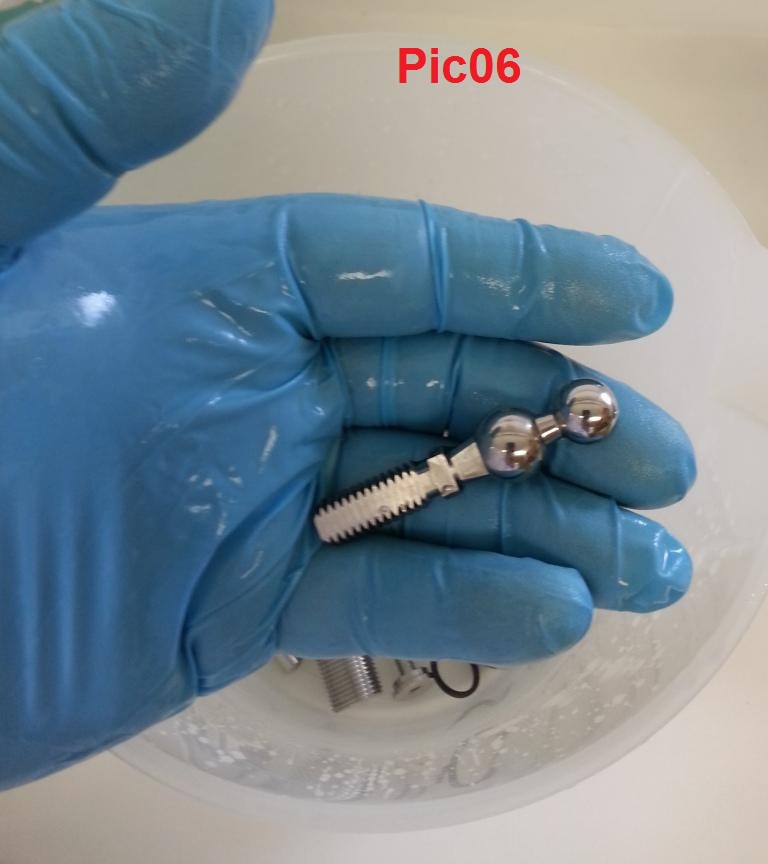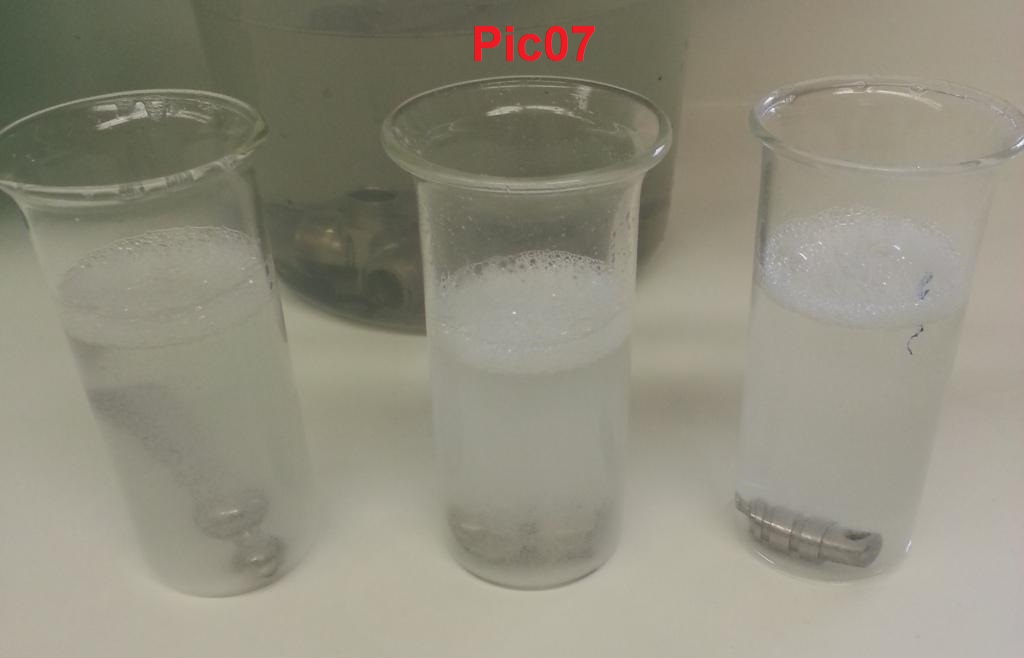agrazela
Well-Known Member
There are many testimonials on the web regarding a sulfur smell coming out in the beer on the first pull of the day when using Perlick 650ss flow-control faucets. I assure you, it is not a myth, it is real.
(Just Google keywords like Perlick 650ss sulfur to see.)
Some think its due to using the flow control as a shut-off valve, creating a (partial) air pocket between the compensator and the lever ball in which residual beer can get funky. Others believe the issue arises from the use of a different grade of stainless (perhaps free-machining 303 grade) on certain internal parts of the 650ss than the 304 grade that is (presumably) used for the main body of the faucet.
I originally thought it was the air pocket issue, as I was using the flow control as a shut-off, and getting the strong sulfur the next day. I stopped doing that, and the issue didnt return the next day, hooray!
But then I left the faucets for three days with the flow control in the halfway position, and the sulfur was back in spades. So now Im investigating the different grade of stainless theory.
A little about the difference between 304 and 303 stainless grades: both are similar high-chromium, non-magnetic, austentitic grades; but 303 has manganese sulfide (MnS) added, which forms small pockets or stringers, which makes the material easier to machine since these stringers allow chips to come off easier. But the typical nitric acid stainless steel passivation procedure allows redeposition of sulfur on the surface of 303 stainless:
https://e-reports-ext.llnl.gov/pdf/307089.pdf
And as indicated in that paper and elsewhere, there apparently are alternative passivation methods for 303 that do NOT create sulfur redeposition:
https://www.cartech.com/techarticles.aspx?id=1566
So maybe some of the internal parts of the 650ss are being made from 303 grade stainless, and maybe those parts are not being passivated correctly for the grade. And then that redeposited sulfur is partially dissolving into the beerespecially when it sits in the faucet for an extended time.
I cant find anyone who has claimed this sulfur smell on the 630ss faucet. So if it is an issue with an internal part that touches beer, and if the 650ss main body IS made from 304 stainless, then the issue must be with a part (or parts) that is not common between the two faucet models; which means it must be the handle lever (Item 5A), flow compensator (Item 9) and/or the steel barrel of the flow control (part of Item 11) in this diagram:
https://www.perlick.com/files/8414/0423/2648/Forward_sealing_faucets_-_spec_sheet.pdf
Now I also cant find anyone who has reported the sulfur issue on a 680ss or 690ss, but Im not sure how common these creamer-function faucets are, so Im not sure if thats any kind of clue; but I do know that the ONLY part that is both internal (touches beer) AND is exclusive to the 650ss is the handle lever (Item 5A, part number 68626-1). And this is the part that most testimonials Ive come across suspect to be the culprit.
Of course, to confound things, there are people who respond in many of the sulfur-smell threads who say they use 650ss faucets and have never gotten the smell. Maybe they drink so much that their faucets dont sit long enough to develop it. Or maybe they got units from production runs where the lever was passivated properly. Or maybeand this is what I believethey disassembled their 650sss and soaked all the parts in Star San (which contains phosphoric acid) before ever putting them into service, and according to the govt paper linked earlier phosphoric acid dip is a main part of an alternative passivation option for 303 and may well have gotten rid of the surface deposited sulfur.
(NOTE: I did disassemble, clean, and sanitize my faucets before use but I did NOT use Star San, I used a sanitizer from the lab I work in that is neither acid or alkaline-based.)
And it is logical to ask, if the 650ss lever is made from 303 grade stainless, why wouldnt the 630ss faucet also use 303 for the lever? Well, maybe they doprobably they do, it only makes sense. But being that these are different part numbers (part number 68726-1 for the 630ss), perhaps the lever for the 630ss is made in an entirely different factory that DOES do the correct passivation procedure. Or, just as likely in my mind, all these parts are made in the same factory, but someone fouled up when writing up the manufacturing specs for the 650ss lever and included the wrong passivation procedure. In my work experience, stuff like that does happen...a LOT!
SO, I did an experiment. I pulled the levers from my three 650ss faucets. And they did smell strongly like rotten eggs. I took a cue from that govt paper where they suggest that improperly passivated 303 stainless can be remedied by soaking the parts in 5% NaOH at 70°C for 30 minutes, followed by a detergent wash, a water rinse, and a wipe with isopropyl alcohol. I did that procedure in the lab, reinstalled the levers and
The sulfur smell was greatly diminished, but it was NOT gone.
So maybe I didnt get it all. Or maybe there are OTHER parts in this faucet that cause the smell or for that matter, maybe my stainless shanks and/or tailpieces are made from 303 that was not properly passivated; some shanks are apparently made from 303:
https://www.perlick.com/bar-beverag...dispensing/tapping-hardwarecomponents/shanks/
http://www.amazon.com/dp/B0197THUJI/?tag=skimlinks_replacement-20
Or maybeand this is what I think is likelysurface sulfur from the 650ss lever got partly dissolved in beer and was re-deposited elsewhere inside the faucet (and maybe inside the shank, too).
So if it is true (or even just possible) that sulfur is now all over the insides, then short of buying new parts, that leaves me with only the nuclear option: Ive got to fully treat my shank, tailpiece and all internal faucet parts. (As well as give a good cleaning to all the rubber parts that may have touched beer.)
Ive got three 650ss faucets, so I figure Ill try three separate treatments:
1) Soak all the relevant parts in Star San (or more accurately, my best-guess lab-concocted simulation of Star San based on MSDS info).
2) Clean the rubber parts, but totally re-passivate all the stainless parts using the alkaline/citric acid/alkaline method from the cartech site linked earlier.
3) Select a treatment youd like to see tried post em up!
These processes will be documented in future posts in this thread.
(Just Google keywords like Perlick 650ss sulfur to see.)
Some think its due to using the flow control as a shut-off valve, creating a (partial) air pocket between the compensator and the lever ball in which residual beer can get funky. Others believe the issue arises from the use of a different grade of stainless (perhaps free-machining 303 grade) on certain internal parts of the 650ss than the 304 grade that is (presumably) used for the main body of the faucet.
I originally thought it was the air pocket issue, as I was using the flow control as a shut-off, and getting the strong sulfur the next day. I stopped doing that, and the issue didnt return the next day, hooray!
But then I left the faucets for three days with the flow control in the halfway position, and the sulfur was back in spades. So now Im investigating the different grade of stainless theory.
A little about the difference between 304 and 303 stainless grades: both are similar high-chromium, non-magnetic, austentitic grades; but 303 has manganese sulfide (MnS) added, which forms small pockets or stringers, which makes the material easier to machine since these stringers allow chips to come off easier. But the typical nitric acid stainless steel passivation procedure allows redeposition of sulfur on the surface of 303 stainless:
https://e-reports-ext.llnl.gov/pdf/307089.pdf
And as indicated in that paper and elsewhere, there apparently are alternative passivation methods for 303 that do NOT create sulfur redeposition:
https://www.cartech.com/techarticles.aspx?id=1566
So maybe some of the internal parts of the 650ss are being made from 303 grade stainless, and maybe those parts are not being passivated correctly for the grade. And then that redeposited sulfur is partially dissolving into the beerespecially when it sits in the faucet for an extended time.
I cant find anyone who has claimed this sulfur smell on the 630ss faucet. So if it is an issue with an internal part that touches beer, and if the 650ss main body IS made from 304 stainless, then the issue must be with a part (or parts) that is not common between the two faucet models; which means it must be the handle lever (Item 5A), flow compensator (Item 9) and/or the steel barrel of the flow control (part of Item 11) in this diagram:
https://www.perlick.com/files/8414/0423/2648/Forward_sealing_faucets_-_spec_sheet.pdf
Now I also cant find anyone who has reported the sulfur issue on a 680ss or 690ss, but Im not sure how common these creamer-function faucets are, so Im not sure if thats any kind of clue; but I do know that the ONLY part that is both internal (touches beer) AND is exclusive to the 650ss is the handle lever (Item 5A, part number 68626-1). And this is the part that most testimonials Ive come across suspect to be the culprit.
Of course, to confound things, there are people who respond in many of the sulfur-smell threads who say they use 650ss faucets and have never gotten the smell. Maybe they drink so much that their faucets dont sit long enough to develop it. Or maybe they got units from production runs where the lever was passivated properly. Or maybeand this is what I believethey disassembled their 650sss and soaked all the parts in Star San (which contains phosphoric acid) before ever putting them into service, and according to the govt paper linked earlier phosphoric acid dip is a main part of an alternative passivation option for 303 and may well have gotten rid of the surface deposited sulfur.
(NOTE: I did disassemble, clean, and sanitize my faucets before use but I did NOT use Star San, I used a sanitizer from the lab I work in that is neither acid or alkaline-based.)
And it is logical to ask, if the 650ss lever is made from 303 grade stainless, why wouldnt the 630ss faucet also use 303 for the lever? Well, maybe they doprobably they do, it only makes sense. But being that these are different part numbers (part number 68726-1 for the 630ss), perhaps the lever for the 630ss is made in an entirely different factory that DOES do the correct passivation procedure. Or, just as likely in my mind, all these parts are made in the same factory, but someone fouled up when writing up the manufacturing specs for the 650ss lever and included the wrong passivation procedure. In my work experience, stuff like that does happen...a LOT!
SO, I did an experiment. I pulled the levers from my three 650ss faucets. And they did smell strongly like rotten eggs. I took a cue from that govt paper where they suggest that improperly passivated 303 stainless can be remedied by soaking the parts in 5% NaOH at 70°C for 30 minutes, followed by a detergent wash, a water rinse, and a wipe with isopropyl alcohol. I did that procedure in the lab, reinstalled the levers and
The sulfur smell was greatly diminished, but it was NOT gone.
So maybe I didnt get it all. Or maybe there are OTHER parts in this faucet that cause the smell or for that matter, maybe my stainless shanks and/or tailpieces are made from 303 that was not properly passivated; some shanks are apparently made from 303:
https://www.perlick.com/bar-beverag...dispensing/tapping-hardwarecomponents/shanks/
http://www.amazon.com/dp/B0197THUJI/?tag=skimlinks_replacement-20
Or maybeand this is what I think is likelysurface sulfur from the 650ss lever got partly dissolved in beer and was re-deposited elsewhere inside the faucet (and maybe inside the shank, too).
So if it is true (or even just possible) that sulfur is now all over the insides, then short of buying new parts, that leaves me with only the nuclear option: Ive got to fully treat my shank, tailpiece and all internal faucet parts. (As well as give a good cleaning to all the rubber parts that may have touched beer.)
Ive got three 650ss faucets, so I figure Ill try three separate treatments:
1) Soak all the relevant parts in Star San (or more accurately, my best-guess lab-concocted simulation of Star San based on MSDS info).
2) Clean the rubber parts, but totally re-passivate all the stainless parts using the alkaline/citric acid/alkaline method from the cartech site linked earlier.
3) Select a treatment youd like to see tried post em up!
These processes will be documented in future posts in this thread.
Last edited by a moderator:


